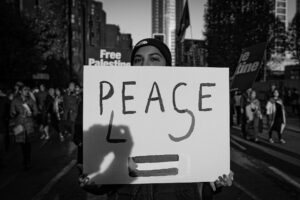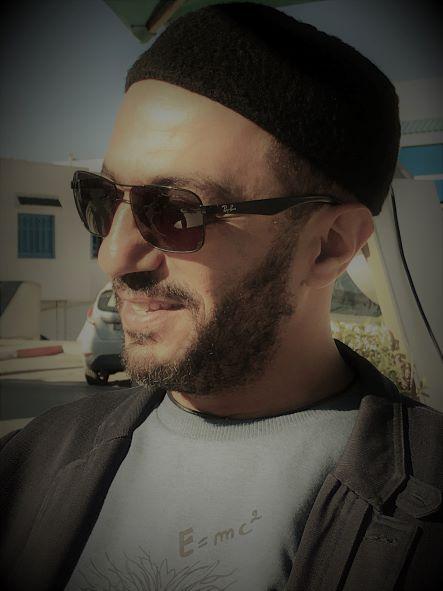Israel’s other Arabs
By Khaled Diab
A new book lifts the veil off Israel's Arab face and shows how, like the Palestinians, Middle Eastern Jews fell victim to political forces beyond their control.
April 2009
To the outside world, Israel stands, depending on your political perspective, as either a proud outpost of the west or humiliating western implant in the Middle East. Although Zionism was born and developed in Europe, up to 3.5 million Israelis trace their roots back to Arab lands – in fact, until the early 1990s, these Mizrahim and Sephardim, as they are known, made up the majority of Israel's population.
Not the enemy by Rachel Shabi, herself an Israeli of Iraqi Jewish ancestry, provides a fascinating account of the personal stories and h

- Cover of Rachel Shabi's Not the Enemy
istory of Mizrahi Jews, whose world fell into the abyss of the Arab-Israeli conflict, while their dual identities as Arabs and Jews proved unable to bridge the ever-widening chasm.
“The absence of the Mizrahi face from the global snapshot of Israel feeds back into a polarised position, serving those on both sides who favour the dichotomous formula of Arab versus Jew,” writes Shabi, who is also a regular contributor to the Guardian.
Even though I knew about Mizrahi and Sephardi Jews beforehand, I was, nevertheless, rather taken aback by how Middle Eastern Israel seemed when I was there a couple of years ago. In fact, my first encounter was with a Moroccan Jewish taxi driver who could shame any Cairo cabbie with his colourful use of curses and expletives and his love of Umm Kalthoum, the Arab world's legendary singing diva.
Subsequently, I met numerous Mizrahi Jews, including a colourful oud player called Murad (Mordechai), nearly all of whom recalled fondly their previous lives before coming to Israel. These encounters sparked a fascination in me to learn more about their history and tragic plight, and Shabi's book compellingly fleshes out how Middle Eastern Jews were first yanked out of Arab lands and then had the Arab yanked out of them in Israel.
Shabi documents the ironic descent of Arab Jews from generally well-integrated and successful minorities at the very heart of Arab culture, politics and business to a relatively marginalised and disadvantaged population in Israel. Through a mix of personal narratives and historical research, the book examines how, despite its pseudo-messianic pledge to provide salvation for Jews, Zionism actually hurt Middle Eastern Jews as Arabs eventually committed the monumental crime – and one for which they need to apologise – of equating Judaism with Zionism and started viewing their Jewish populations as “enemies within”.
In fact, some Mizrahim are very blunt about the link between Zionism and their plight. “If Israel had not been established, nothing would've happened to the Iraqi Jews,” opines the Iraqi-Jewish poet Me'ir Basri.
But the suspicion and distrust did not end there. Their resemblance to Arabs – in fact, you could argue that they are also ‘Israeli Arabs' – in everything but religion caused them to be viewed with a mixture of condescension, contempt and even fear. This kind of culture shock is, at one level, understandable, as it is a myth to expect the simple fact of belonging to a single faith automatically means that people are the same. “We have here a people whose primitiveness sets a record,” wrote a Ha'aretz reporter in 1948, not of the Palestinians, but of Mizrahi refugees.
This anti-Mizrahi prejudice among the Ashkenazim (European Jews) elite translated into them being whisked away to live in the remotest parts of Israel and populate what are known as ‘development towns' which failed to develop into anything beyond a receptacle for broken promises and shattered dreams.
The Ashkenazi elite also set about ‘civilising' the Mizrahi Jews and shaping them into modern ‘Israelis'. Of course, up to a certain extent, this happened to all immigrants, but since the Ashkenazi were calling the shots, it was their culture that most influenced the Israeli ideal. “I don't have a cultural identity,” confesses Sasson, an ex-teacher from Sderot, the development town on the edge of Gaza whose population is almost exclusively Moroccan Jewish. “My heart is in the east and my culture is western… They dressed me up in a culture that wasn't mine.”
Things have improved significantly in recent years, and Mizrahi culture is growing in popularity and influence. They and Ashkenazi are increasingly intermarrying and there are plenty of successful Mizrahim around. But much as Israelis would like to bury this ‘ethnic demon', it keeps coming back to haunt them like a “genie in a bottle”, Shabi observes.
Mizrahim still make up the bulk of Israel's poor and undereducated; they are often stereotyped in the media as pimps, hustlers and whores; their culture, despite making major inroads, is still seen as somewhat inferior; and their accent, although it is the more accurate form of Hebrew, is scorned.
Although the disappeared Jewish presence in Arab lands was not quite a paradise lost, their migration to Israel was not a paradise found either. Despite certain episodes of oppression, such as the persecution instigated by the fanatical Almohads in North Africa and Spain in the 12th century, Arab Jews were an integral component of the region's cultural, social and economic fabric.
This was especially the case in Iraq, which arguably had the world's oldest continuous Jewish presence. Babylonian Jews – who once made up to one in four of Baghdad's population – were significant players in every walk of life, including politics, the arts, music and business. As Shabi's father put it, referring to the famous Rivers of Babylon hymn – spread by the disco prophets Boney M: “They weren't crying. They were singing and dancing and drinking arak.”
Could this common cultural heritage and affinity aid the quest for peace with the Arabs – what Shabi calls the “Mizrahi bridge hypothesis”? She once hoped it could, but her research led her to abandon her “crashed pet theory”.
“This theory is pathologically detached from reality,” she concludes soberly, “a type of falsely cheery wallpaper that refuses to stick to walls wet with blood”.
Despite all the signs to the contrary, I wouldn't be so quick to dismiss the potential role Mizrahi Jews could play in building understanding and empathy. The fact that they are more likely to be ultra-nationalistic, ultra-conservative and ultra-right wing than Ashkenazis is partly due to their sense of betrayal at the hands of the Arab world and Israel alike.
But as new generations of Mizrahi Jews discover a renewed pride in their heritage, this could lead to further corrosion of the simplistic polarity of the official narratives of the Arab-Israeli conflict. This, in turn, could prompt more dialogue with Arabs, which could eventually build the kind of understanding required to provide a solid foundation for peace.
Moreover, the Mizrahi experience resembles that of the Palestinians, and this is increasingly leading to joint activism at the grassroots level, such as when Israeli Arabs joined Mizrahi Jews protesting eviction in a village on the outskirts of Tel Aviv, even though it had once been a Palestinian village.
In addition, a vocal Mizrahi minority have been at the forefront of the peace movement for decades. For instance, it was a Mizrahi organisation, the radical Black Panthers, which was the first Israeli group to recognise the PLO, and a couple of years before the Madrid peace conference, Arab Jewish and Palestinian politicians, writers and academics held their own informal peace conference in the Spanish city of Toledo.
And even if it is misguided to believe that the chasm can be bridged, those who wish to work for peace and coexistence must continue to stretch as far across it as they can. As Sasson Somekh, the Iraqi-born professor of Arabic literature and long-time friend of the late Egyptian Nobel laureate Naguib Mahfouz, expressed it: “I am aware that I did not produce any important results, but I'm not going to stop.”
This column appeared in The Guardian Unlimited's Comment is Free section on 2 April 2009. Read the related discussion.



